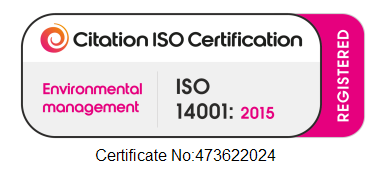Which Decoration Method for Promotional Products Is Best for the Environment?
29 October 2024
Eco-friendly promotional goods and the decoration methods

When choosing eco-friendly promotional products, the materials we choose are only half the equation. How we brand and decorate these items can also make a significant environmental impact. Today, we’re exploring the most popular decoration methods—screen printing, pad printing, embossing, transfer printing and embroidery—to see which is best for the environment.
1. Screen Printing
How It Works: Screen printing involves pressing ink through a mesh screen onto the product, one colour at a time.
Environmental Impact:
- Pros: Screen printing can be eco-friendly if water-based or plant-based inks are used, which avoid harsh chemicals. Water based screen printing is not common.
- Cons: Traditional screen printing uses plastisol inks containing PVC and phthalates, which can leach into the environment. Additionally, screens need to be cleaned, often with chemical solvents, generating wastewater.
Green Tips: Opt for companies that use eco-friendly inks and solvent-free cleaning methods. Look for certifications or statements about their environmental practices.
2. Pad Printing
How It Works: Pad printing transfers ink from an etched plate onto the product using a silicone pad, making it ideal for printing on curved or uneven surfaces.
Environmental Impact:
- Pros: Pad printing uses less ink than other methods, which can reduce waste.
- Cons: Traditional inks may still contain harmful solvents. Additionally, the etched plates are often single-use, leading to metal waste.
Green Tips: Some companies now offer solvent-free inks or use non-toxic alternatives. Reusable or recyclable plates can also make a difference.
3. Embossing and Debossing
How It Works: Embossing raises the design on the product surface, while debossing indents it, creating a tactile, ink-free design.
Environmental Impact:
- Pros: This method requires no ink, solvents, or other chemicals. Once a die is created, it can often be reused for multiple runs.
- Cons: Dies are often made from metal, which can be energy-intensive to produce, but their longevity can balance this impact.
Green Tips: Choosing embossing or debossing on eco-friendly materials can be one of the greenest options for a lasting, chemical-free design.
4. Embroidery
How It Works: Embroidery involves stitching thread into the fabric to create the design, providing durability and a high-quality appearance.
Environmental Impact:
- Pros: No chemicals or inks are used, and embroidery can last as long as the product itself, reducing waste over time.
- Cons: Synthetic threads, like polyester, are petroleum-based. However, natural thread options are available, although they may be more costly.
Green Tips: Opt for organic or recycled thread and ensure the embroidery process is powered by renewable energy if possible.
5. Transfer Printing
How It Works: Transfer printing uses heat to apply pre-printed designs from a special paper onto the product surface. It’s commonly used on fabrics but can also work on hard surfaces.
Environmental Impact:
- Pros: Transfer printing can achieve vibrant, multi-colour designs in a single application, reducing waste from multiple colour layers and screens.
- Cons: Traditional transfer printing often involves plastic-based films and adhesives that aren’t biodegradable. Heat pressing also consumes energy, and the materials used in transfer papers and films may not be recyclable.
Green Tips: Look for transfer processes that use biodegradable or recycled films, water-based inks, and energy-efficient equipment. Some companies are now offering eco-transfer methods that limit or eliminate plastic in the process.
Adding transfer printing to your selection provides versatility, especially for detailed designs, while still allowing for eco-friendly choices that minimize environmental impact.
So, Which Method is Best for the Environment?
For a low-impact branding option, embossing/debossing and embroidery come out on top due to their minimal use of chemicals and potential longevity. However, every method can be made greener by choosing eco-friendly materials, inks, and energy sources.
Making Environmentally Smart Choices
When selecting a decoration method, consider the product's lifespan, intended use, and materials. Small changes, like choosing water-based inks or sustainable threads, can have a big impact when multiplied across thousands of products.
By making informed decisions about decoration methods, you can elevate your brand and your commitment to the environment simultaneously.





